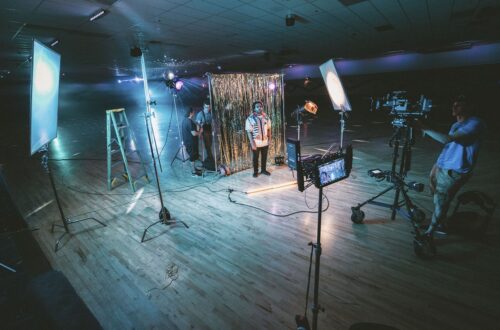
The Importance of Green Screen in Filmmaking
Technological advancements have continuously pushed the boundaries of creativity and storytelling. One of the most transformative tools in this regard is the green screen, a technique that has revolutionized how filmmakers produce visual effects and create immersive worlds. This blog post explores the significance of green screens in filmmaking and how they have become an essential component of modern cinematic production.
What is Green Screen?
A green screen, or chroma keying, is a visual effects (VFX) technique that allows filmmakers to isolate and remove a specific color (usually green or blue) from a shot, replacing it with a different background or image. This method enables the seamless integration of actors and objects into various environments that would be otherwise impossible or impractical to film in.
Enhancing Visual Storytelling
One of the primary benefits of using green screens is their ability to enhance visual storytelling. Filmmakers can transport audiences to fantastical worlds, historical settings, or futuristic landscapes without ever leaving the studio. This flexibility allows for more creative freedom in scriptwriting and scene planning, as storytellers are no longer confined by real-world limitations.
Cost-Effective Production
Green screens significantly reduce production costs. Constructing elaborate sets or traveling to remote locations can be prohibitively expensive. By using green screens, filmmakers can achieve the same effect at a fraction of the cost. This budget-friendly approach makes high-quality production more accessible to independent filmmakers and small studios.
Time Efficiency
In addition to cost savings, green screens also improve time efficiency. Setting up and filming on location can be time-consuming, with unpredictable weather conditions and logistical challenges causing delays. Green screens provide a controlled environment, allowing for faster setup and fewer disruptions. This efficiency enables tighter shooting schedules and quicker post-production timelines.
Seamless Integration with CGI
Green screens are indispensable when integrating computer-generated imagery (CGI) into live-action footage. Modern films often rely on CGI to create stunning visual effects, and green screens facilitate this process by providing a clean, consistent background for digital artists to work with. The result is a seamless blend of real and virtual elements, enhancing the overall visual experience.
Safety and Practicality
Filming dangerous stunts or complex action sequences can pose significant risks to actors and crew. Green screens offer a safer alternative by allowing these scenes to be performed in a controlled environment. Filmmakers can add dramatic backgrounds and effects in post-production, ensuring the safety of everyone involved while still delivering high-impact visuals.
Expanding Creative Possibilities
The use of green screens expands creative possibilities in ways that were once unimaginable. Directors can experiment with different settings, lighting, and visual styles without being constrained by physical limitations. This creative freedom has led to the development of iconic scenes and memorable moments in cinematic history, showcasing the limitless potential of the medium.
Educational and Training Applications
Beyond entertainment, green screens are also valuable in educational and training applications. Filmmaking students can learn the fundamentals of VFX and explore their creativity without needing expensive equipment or locations. Similarly, corporate training videos and presentations can benefit from the professional touch that green screens provide, making content more engaging and effective.
Conclusion
The importance of green screens in filmmaking cannot be overstated. They have democratized the production process, enabling filmmakers of all levels to bring their visions to life with greater ease and affordability. By enhancing visual storytelling, reducing costs, improving safety, and expanding creative possibilities, green screens have become an indispensable tool in the modern filmmaker’s toolkit. As technology continues to advance, the role of green screens in filmmaking will only grow, further blurring the lines between imagination and reality.





